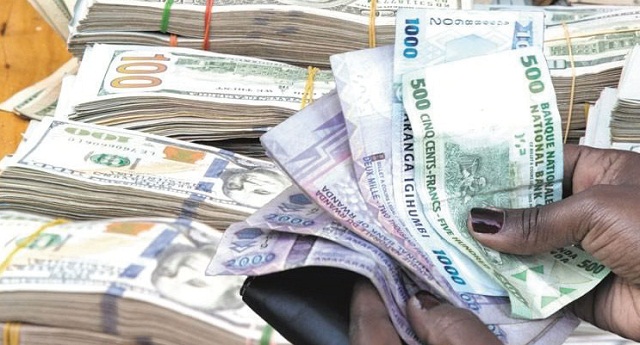
West African political leaders recently announced that the CFA franc – a currency created by France in 1945 for its colonies and still used by 14 African countries – will be replaced this year by a new currency pegged to the euro called the eco.
COMMENT |Célestin Monga | But lessons from the CFA franc zone’s own experience and from the eurozone raise serious doubts about the region’s preparedness for the challenges this new monetary union will bring.
Critics of the CFA franc zone have long focused on France’s perceived dominance, which many believe has resulted in what the late Cameroonian economist Joseph Tchundjang Pouemi called CFA Africa’s “monetary servitude.” New reforms will aim to change that by loosening ties with France, including by ending the requirement that member states deposit half of their foreign reserves there. (Previously, that rule included France’s guarantee of the convertibility of the CFA franc.).
But the real challenges facing African monetary unions have nothing to do with political sovereignty. They relate, instead, to economics. Despite 75 years of existence, the CFA franc zone is still home to some of the world’s poorest countries (Niger, Mali, Burkina Faso, and the Central African Republic). Even in the richest and most advanced of the CFA franc countries (Cameroon and Côte d’Ivoire), real incomes per capita in 2019 were lower than they were some four decades ago.
That is why the eco – and other regional currency projects, such as the Southern African Development Community (SADC) and East African Community (EAC) – represents one of the biggest economic policy challenges in Africa’s history. The continent comprises small, open economies that rely on trade as their main engine of growth. Because of their production structure and export portfolios, policymakers’ choice of exchange-rate regimes and policies directly determines growth prospects, sectoral and employment dynamics, structural transformation, and institutional development. And a monetary union of poor countries with a common currency pegged to a strong euro will jeopardize the external competitiveness that is so critical to their growth.
Equally worrying, in several crucial respects, the CFA franc countries currently do not meet the economic criteria for joining a monetary union. First and foremost, trade volumes among CFA franc members, and within the future eco zone, are too low to make a monetary union desirable. The greater the volume of trade within a group of countries, the larger the potential gains from a single currency, and the smaller the incentive for members to seek adjustments through unilateral monetary strategies and flexible exchange rates.
But intra-African trade represents less than 15% of regional commerce. By contrast, when the euro was adopted in 1999, intra-European commerce already represented about 60% of French and German foreign trade. Political leaders in Africa and France have stated that one of their main motives for creating the eco zone is to foster economic integration. That is the wrong way around: Countries do not adopt a common currency because the trade level among them is low, but because they already trade with one another to such an extent that they can substantially reduce their transaction costs by eliminating exchange-rate risk.
A second major shortcoming is the divergence in industrial structure among the eco zone’s members, which means that they react to external shocks, such as changes in commodity prices, in conflicting ways.
While some of the current CFA franc zone countries (Cameroon, Côte d’Ivoire, Gabon, and Equatorial Guinea) are oil exporters and benefit from a rise in the oil price, others (Central African Republic, Niger, Mali, and Burkina Faso) are oil importers and would suffer. When members of monetary unions face such asymmetric shocks, the institutional architecture becomes unbalanced and unstable.
Third, despite many treaties and agreements, the free movement of goods and people across national borders – an essential requirement for a well-functioning monetary union – is heavily constrained within the existing CFA franc zone.
This “factor mobility” is the best guarantee against external shocks, because people can migrate freely across borders to take advantage of employment opportunities. In the eurozone, for example, free movement of labor enables Greek workers to work in Berlin or Paris. By contrast, a Cameroonian worker who wants to migrate to neighboring Gabon has little chance of getting a work permit – and even if they did, they would encounter open, if not violent, hostility from local workers embittered by years of unemployment.
Lastly, there is no common fiscal policy within the CFA franc zone and no credible enforcement mechanism to deter excessive indebtedness by individual member states or to manage sovereign debt collectively. Moreover, deeper integration of the national banking and financial systems would be needed to facilitate the monitoring, supervision, and containment of financial-contagion risks posed by interdependence.
But Africa’s track record on institution building, especially for overseeing sensitive governance issues involving sovereign states, is poor. Even when rules are adopted and exist on paper, the lack of credible monitoring and enforcement means they stay there. Countries in the SADC and EAC also fail to meet the criteria for optimal currency areas with well-functioning transnational public-finance and banking systems. African political leaders view monetary unions as a stepping-stone toward continental political unity. But a common monetary policy is not adequate to achieve such a goal. No regional integration strategy can survive, much less overcome, pervasive poverty and social tensions. Economic development is a precondition for stable societies.
A more appropriate monetary strategy for African countries would be to redesign Africa’s monetary integration project and implement it through concentric circles, with smaller groups of countries that have similar production structures and factor mobility, along with credible transnational fiscal and banking policies. A shared currency pegged to a basket of currencies or with a flexible exchange-rate regime would ensure external competitiveness and yield more economic benefits.
Another option is to follow the paths of former CFA franc zone members such as Morocco, Tunisia, and Vietnam (Indochina). By reclaiming national control over monetary policy, they were able to ensure their external competitiveness, connect their industries to global value chains, and take advantage of the benefits of world trade.
A well-functioning monetary union requires supranational fiscal institutions and rules that can be enforced to help members respond to asymmetric shocks. The free movement of goods and labor should be a reality, not a goal. Deficits and debt policies should be consistent across the currency union and be monitored by a credible central authority. And the financial and banking sectors should be under careful supervision by a union-wide institution capable of enforcing strict prudential rules. Short of meeting these prerequisites, the proposed eco zone in West Africa will be a challenging, risky, and possibly painful venture for all involved.
****
Célestin Monga is the Senior Economic Adviser at the World Bank.
Copyright: Project Syndicate 2020
 The Independent Uganda: You get the Truth we Pay the Price
The Independent Uganda: You get the Truth we Pay the Price



